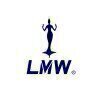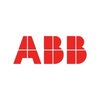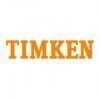Filter interviews by
Kirloskar Brothers Mechanical Maintenance Engineer Interview Questions and Answers
Kirloskar Brothers Mechanical Maintenance Engineer Interview Experiences
1 interview found
I applied via Naukri.com
Interview Questionnaire
1 Question
- Q1. Plz give questions
Interview Preparation Tips
Major a stress test
Top trending discussions






Interview questions from similar companies

I applied via Company Website and was interviewed before Jul 2021. There were 3 interview rounds.

(2 Questions)
- Q1. Power plant related Questions
- Q2. Steam turbine and AFBC and CFBC Boiler
(1 Question)
- Q1. General Questions for personal not technically
Interview Preparation Tips

Interview Questionnaire
1 Question
- Q1. Ash handling, boiler maintenance, refractory, sap, ptw.

Mechanical Engineer Interview Questions & Answers
Lakshmi Machine Worksposted on 2 Nov 2022
I applied via Approached by Company and was interviewed before Nov 2021. There were 2 interview rounds.

(2 Questions)
- Q1. Mechanical electrical related any interview
- Q2. My moto G3 phase not working what is the what is issue
Interview Preparation Tips

I applied via Walk-in and was interviewed before Jul 2023. There were 2 interview rounds.
Easy but took time questions were direct as well as indirect
(2 Questions)
- Q1. Introduce your self
- Q2. Showcase your skills
Interview Preparation Tips

Mechanical Engineer Interview Questions & Answers
Thermax Limitedposted on 9 Dec 2022
I applied via Naukri.com and was interviewed in Nov 2022. There were 2 interview rounds.

(5 Questions)
- Q1. Boiler startup producer
- Ans.
Boiler startup producer is a device used to ignite the fuel and start the combustion process in a boiler.
Boiler startup producer is also known as an ignition system.
It is responsible for producing a spark or flame to ignite the fuel.
There are different types of startup producers such as pilot lights, electric starters, and oil guns.
The type of startup producer used depends on the type of fuel and boiler being used.
Prop...
- Q2. Boiler shutdown producer
- Q3. What is draft in boiler
- Ans.
Draft in a boiler refers to the flow of air or gases through the combustion chamber and flue gas passages.
Draft is created by a difference in pressure between the inside and outside of the boiler.
It is necessary for proper combustion and efficient operation of the boiler.
There are two types of draft: natural draft and forced draft.
Natural draft is created by the buoyancy of hot gases, while forced draft is created by m...
- Q4. Cooling tower performance
- Ans.
Cooling tower performance is measured by its ability to remove heat from a process stream.
Cooling tower performance is affected by factors such as air flow rate, water flow rate, and temperature difference between the process stream and cooling water.
The efficiency of a cooling tower can be improved by increasing the surface area of the heat transfer media, using a more efficient fan, or optimizing the water distributi...
- Q5. Pump lineup and its efficiency
- Ans.
Pump lineup is crucial for efficient operation. Proper selection and maintenance can improve efficiency.
Pump lineup should be selected based on the required flow rate and head
Centrifugal pumps are commonly used for low viscosity fluids while positive displacement pumps are used for high viscosity fluids
Efficiency can be improved by proper maintenance such as regular cleaning and lubrication
Variable frequency drives can...
Interview Preparation Tips
- Boiler Operations
- Pumps
- Cooling Tower
- Fans

I applied via Naukri.com and was interviewed in Oct 2021. There were 4 interview rounds.
Interview Questionnaire
1 Question
- Q1. No question
Interview Preparation Tips

I applied via Referral and was interviewed in May 2023. There were 3 interview rounds.

GD &T and basic mechanical engineer
(2 Questions)
- Q1. Salary negotiation and basic background
- Q2. Last firm salary discussion
Interview Preparation Tips


(1 Question)
- Q1. First question is tell me yourself
Interview Preparation Tips

Mechanical Engineer Interview Questions & Answers
EMERSON PROCESS MANAGEMENTposted on 6 Mar 2023
I applied via Approached by Company and was interviewed before Mar 2022. There were 2 interview rounds.

(3 Questions)
- Q1. Tell us about piping
- Ans.
Piping refers to the system of pipes used to transport fluids or gases from one location to another.
Piping is used in a variety of industries, including oil and gas, chemical, and power generation.
It can be made from a variety of materials, including steel, copper, and plastic.
Piping systems can be complex and require careful design and installation to ensure proper flow and pressure.
Maintenance and inspection of pipin...
- Q2. What is piping stress
- Ans.
Piping stress is the stress induced in a piping system due to various loads and forces.
Piping stress can be caused by thermal expansion, pressure, weight, vibration, and seismic activity.
It can lead to deformation, leakage, and failure of the piping system.
Piping stress analysis is done to ensure the safe and reliable operation of the piping system.
Factors such as material properties, pipe routing, and support design a...
- Q3. What are piping materials
- Ans.
Piping materials are the materials used for constructing pipes that transport fluids or gases.
Piping materials can be metallic or non-metallic.
Common metallic piping materials include carbon steel, stainless steel, copper, and aluminum.
Non-metallic piping materials include PVC, CPVC, fiberglass, and HDPE.
The choice of piping material depends on factors such as the type of fluid or gas being transported, temperature, pr
Interview Preparation Tips
Tell us how to improve this page.
Kirloskar Brothers Interviews By Designations
- Kirloskar Brothers Deputy Manager Interview Questions
- Kirloskar Brothers Assistant Manager Interview Questions
- Kirloskar Brothers Sales Manager Interview Questions
- Kirloskar Brothers Associate Manager Interview Questions
- Kirloskar Brothers Production Graduate Engineer Trainee Interview Questions
- Kirloskar Brothers Graduate Engineer Trainee (Get) Interview Questions
- Kirloskar Brothers Business Manager Interview Questions
- Kirloskar Brothers Mechanical Engineer Interview Questions
- Show more
Interview Questions for Popular Designations
- Maintenance Engineer Interview Questions
- Electrical Maintenance Engineer Interview Questions
- Maintenance Manager Interview Questions
- Mechanical Maintenance Fitter Interview Questions
- Maintenance Supervisor Interview Questions
- Maintenance Fitter Interview Questions
- Maintenance Electrician Interview Questions
- Mechanical Maintenance Technician Interview Questions
- Show more
Interview Questions from Similar Companies
Fast track your campus placements
|
Assistant Manager
406
salaries
| ₹2.8 L/yr - ₹9.9 L/yr |
|
Deputy Manager
312
salaries
| ₹4 L/yr - ₹11.8 L/yr |
|
Associate Manager
302
salaries
| ₹5.2 L/yr - ₹16 L/yr |
|
Manager
240
salaries
| ₹7 L/yr - ₹18 L/yr |
|
Business Manager
120
salaries
| ₹2.8 L/yr - ₹12 L/yr |

Thermax Limited

ABB

Isgec Heavy Engineering

Atlas Copco
- Home >
- Interviews >
- Kirloskar Brothers Interview Questions >
- Kirloskar Brothers Mechanical Maintenance Engineer Interview Questions















